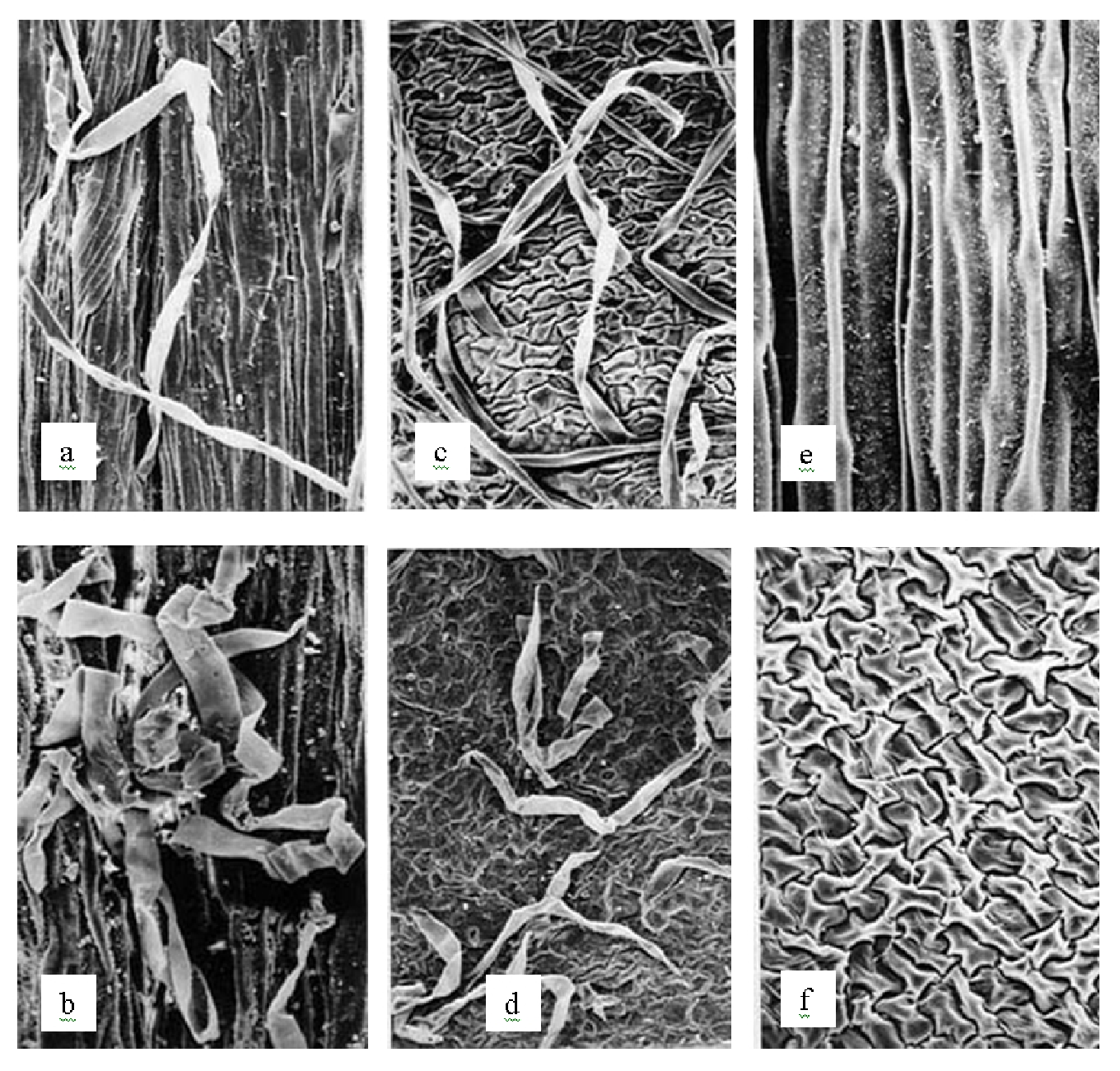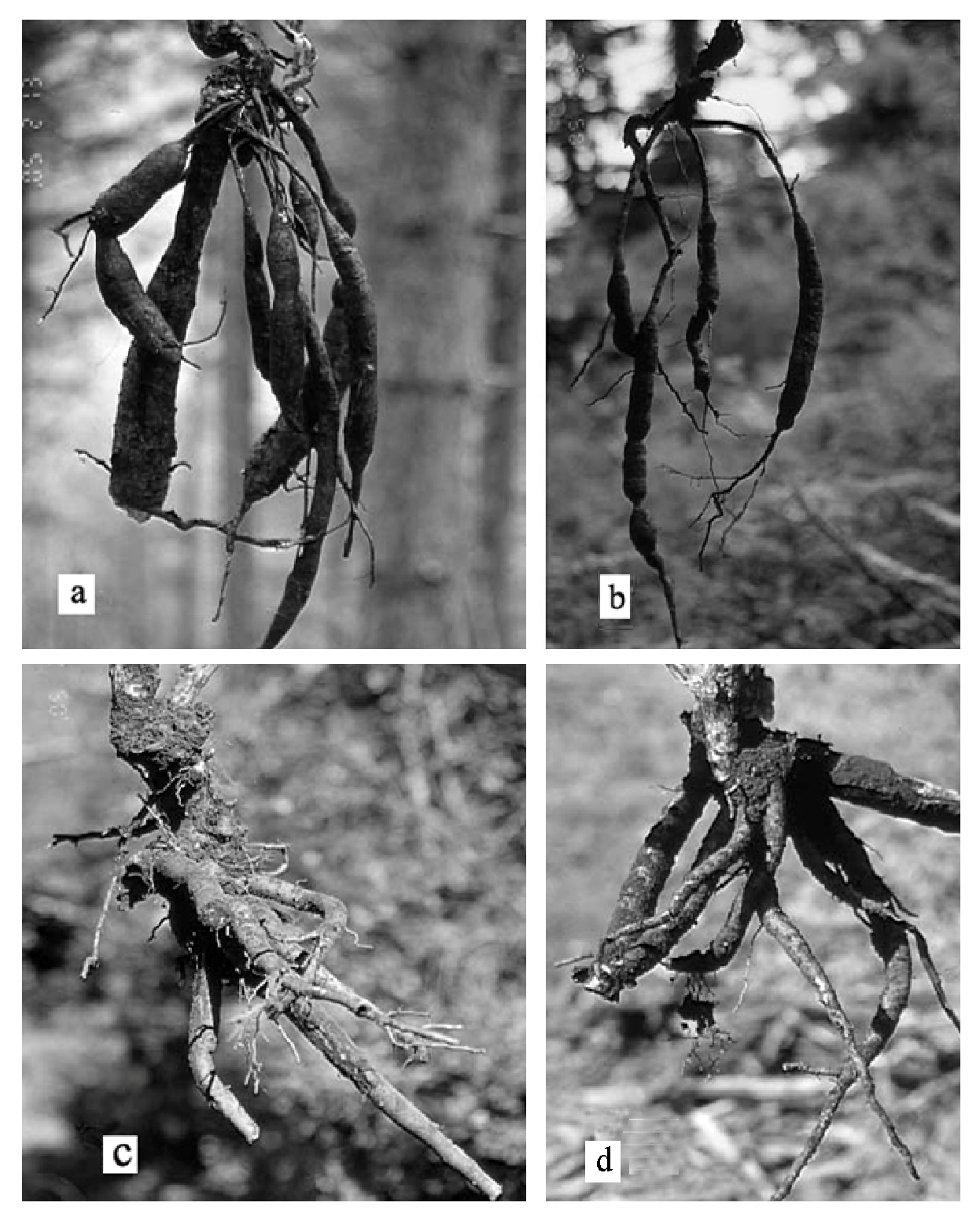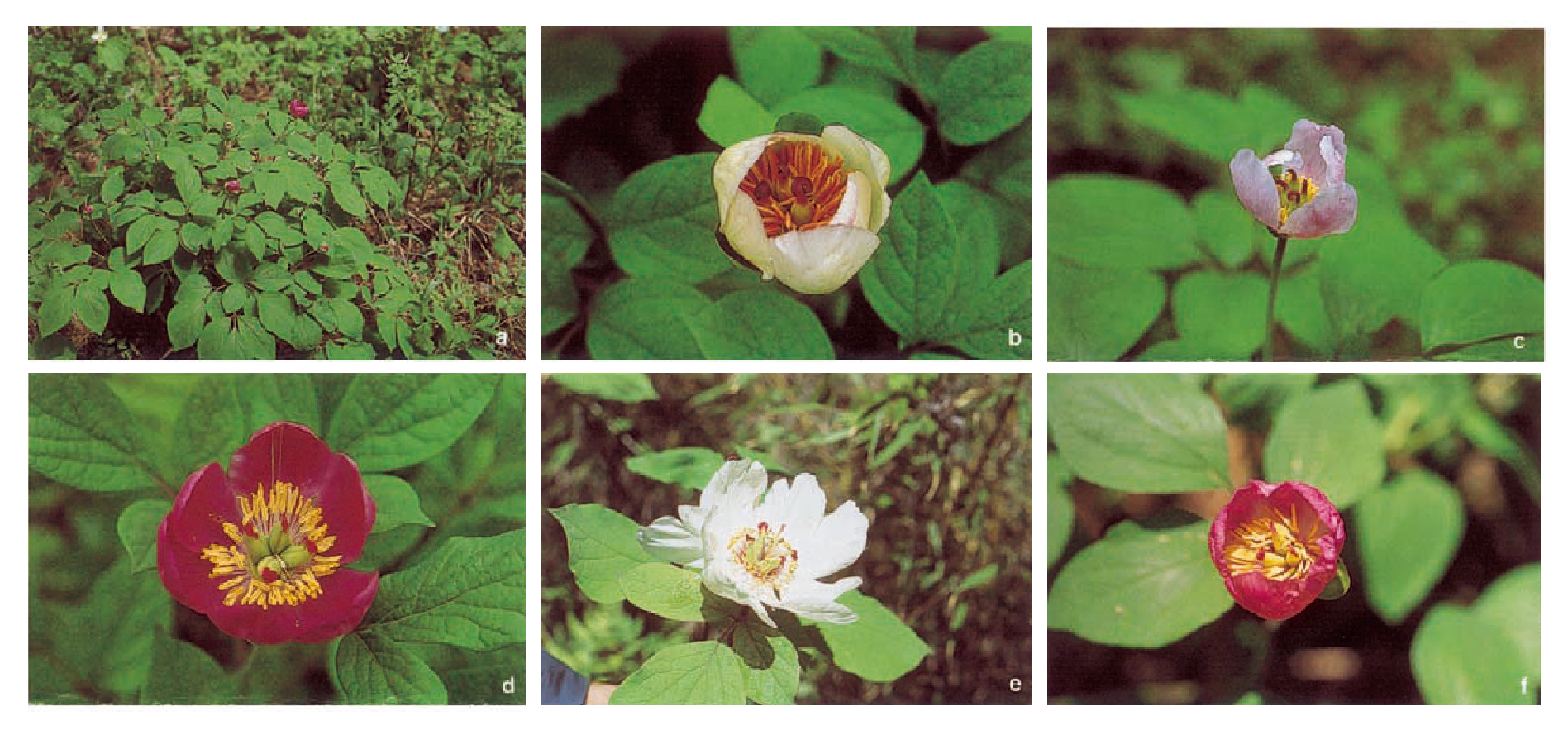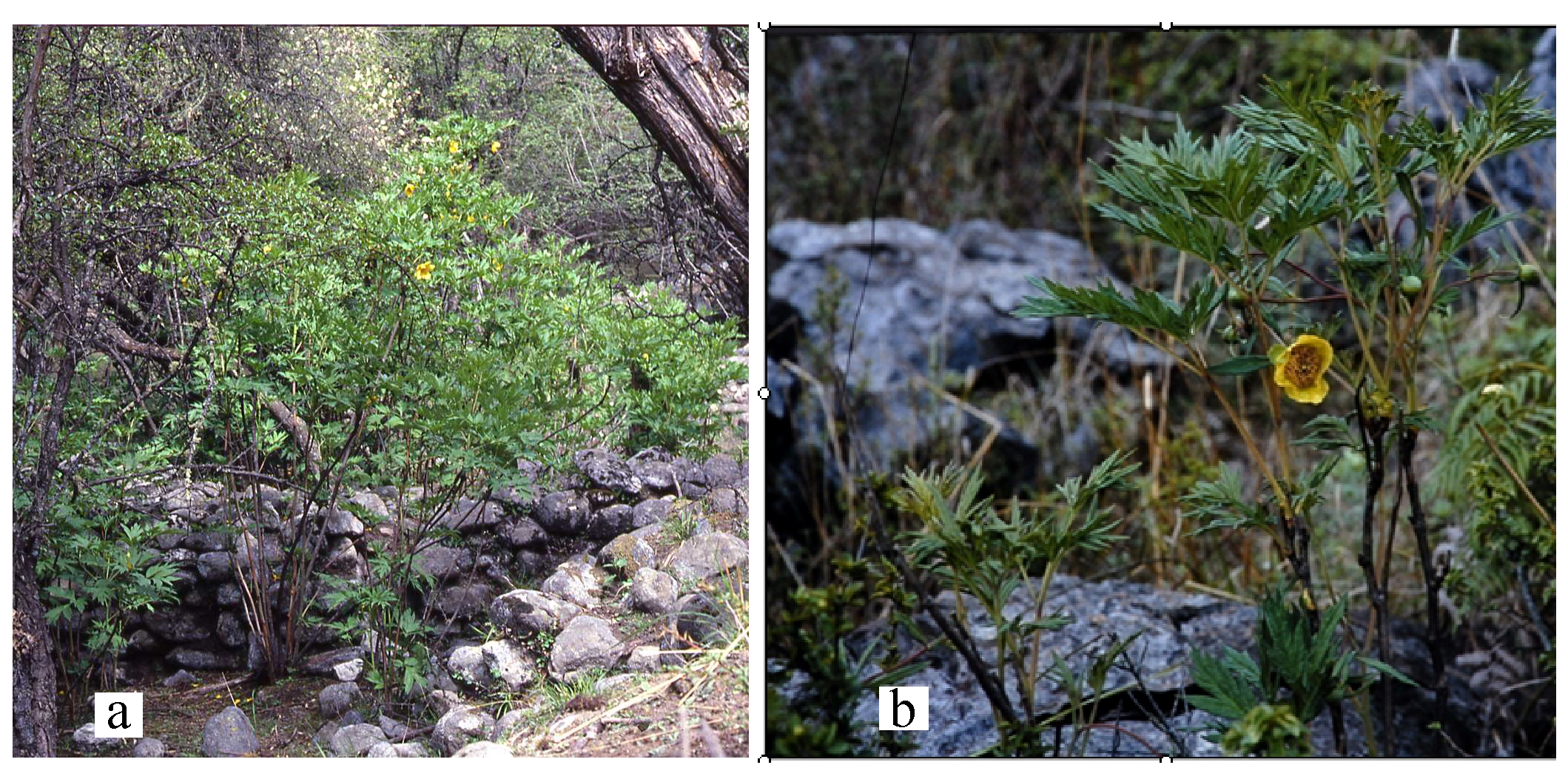



生物多样性 ›› 2016, Vol. 24 ›› Issue (9): 979-999. DOI: 10.17520/biods.2016203 cstr: 32101.14.biods.2016203
出版日期:2016-09-20
发布日期:2016-10-09
通讯作者:
洪德元
基金资助:Online:2016-09-20
Published:2016-10-09
Contact:
Hong De-Yuan
摘要:
物种概念(species concept)是生物学家们持续关注的中心问题。物种概念决定物种划分, 而物种划分的合理性关系到生物多样性的研究、保护和可持续利用。本文把现有较流行的物种概念分为6类, 并对它们予以述评后指出: 虽然生物学物种概念、遗传学物种概念、进化物种概念、系统发生物种概念等从不同方面认识了物种的客观真实性和物种的本质, 但在实践中都难以操作。绝大多数物种是由分类学家划分的, 但目前所有的分类学物种概念都包含有不同程度的主观因素, 从而造成物种划分的人为性, 对生物多样性研究造成负面影响。因此, 生物多样性事业需要科学、可操作的物种概念。本文在吸收了生物学物种概念、遗传学物种概念、进化物种概念以及系统发生物种概念等的长处, 也分析了它们的不足和问题的基础上提出一个新的物种概念, 即形态-生物学物种概念。最后, 以芍药属(Paeonia)几个物种的处理为例, 说明这一新的物种概念是可操作的, 划分的物种在形态上区别分明, 易于鉴别。更重要的是, 其结果得到基于25或26个单拷贝或寡拷贝核基因DNA序列所作的系统发生分析的强有力支持。各个物种在系统发生树上形成单系和独立的谱系, 表明其间各自形成独立的基因库, 没有基因交换, 它们独立进化, 有各自的生态位和独立的分布区。因此, 利用这一新的物种概念能够达到预期目标。
洪德元 (2016) 生物多样性事业需要科学、可操作的物种概念. 生物多样性, 24, 979-999. DOI: 10.17520/biods.2016203.
De-Yuan Hong (2016) Biodiversity pursuits need a scientific and operative species concept. Biodiversity Science, 24, 979-999. DOI: 10.17520/biods.2016203.
| 物种概念 Species concept | |
|---|---|
| 1 | 无性繁殖物种 Agamospecies |
| 2 | 自衍征物种 Autapomorphic species |
| 3 | 生物学物种 Biospecies |
| 4 | 支序物种 Cladospecies |
| 5 | 内聚物种 Cohesion species |
| 6 | 掠夺物种 Compilospecies |
| 7 | 复合物种 Composite species |
| 8 | 生态学物种 Ecospecies |
| 9 | 进化物种 Evolutionary species |
| 10 | 进化显著单元 Evolutionary significant unit |
| 11 | 血缘和谐物种 Genealogical concordance species |
| 12 | 基因物种 Genic species |
| 13 | 遗传学物种 Genetic species |
| 14 | 基因型簇 Genotypic cluster |
| 15 | 亨氏物种 Hennigian species |
| 16 | 节点间物种 Internodal species |
| 17 | 涵盖范围最小分类单元 Least inclusive taxonomic unit (LITUS) |
| 18 | 形态学物种 Morphospecies |
| 19 | 无维物种 Non-dimensional species |
| 20 | 假物种 Nothospecies |
| 21 | 系统发生分类群物种 Phylogenetic taxon species |
| 22 | 表征物种 Phenospecies |
| 23 | 识别物种 Recognition species |
| 24 | 生殖竞争物种 Reproductive competition species |
| 25 | 接替物种 Successional (successive) species |
| 26 | 分类学物种 Taxonomic species |
表1 Wilkins (2006, 2009)列举的26个物种概念
| 物种概念 Species concept | |
|---|---|
| 1 | 无性繁殖物种 Agamospecies |
| 2 | 自衍征物种 Autapomorphic species |
| 3 | 生物学物种 Biospecies |
| 4 | 支序物种 Cladospecies |
| 5 | 内聚物种 Cohesion species |
| 6 | 掠夺物种 Compilospecies |
| 7 | 复合物种 Composite species |
| 8 | 生态学物种 Ecospecies |
| 9 | 进化物种 Evolutionary species |
| 10 | 进化显著单元 Evolutionary significant unit |
| 11 | 血缘和谐物种 Genealogical concordance species |
| 12 | 基因物种 Genic species |
| 13 | 遗传学物种 Genetic species |
| 14 | 基因型簇 Genotypic cluster |
| 15 | 亨氏物种 Hennigian species |
| 16 | 节点间物种 Internodal species |
| 17 | 涵盖范围最小分类单元 Least inclusive taxonomic unit (LITUS) |
| 18 | 形态学物种 Morphospecies |
| 19 | 无维物种 Non-dimensional species |
| 20 | 假物种 Nothospecies |
| 21 | 系统发生分类群物种 Phylogenetic taxon species |
| 22 | 表征物种 Phenospecies |
| 23 | 识别物种 Recognition species |
| 24 | 生殖竞争物种 Reproductive competition species |
| 25 | 接替物种 Successional (successive) species |
| 26 | 分类学物种 Taxonomic species |

图15 Paeonia arietina (a-d, 均被柔毛)和P. mascula (e, f,两处均无毛)的茎表面和萼片背面的扫描电镜照片, 示被毛的差异。a, b (H02216)和c, d (H02217)均采自土耳其的Sivas; e, f: H01004, 采自法国的Chadieu。a, c, e: 茎表面; b, d, f: 萼片背面。

图16 Paeonia arietina (P. mascula subsp. arietina) (a, b)和P. mascula (c, d)两个类群的根形态。a: H02204, 采自土耳其的Ida山; b: H02224, 采自土耳其的Giresun; c: H02226, 采自希腊的Euboea; d: H02203, 采自土耳其的Canakkale。(洪德元摄)

图19 Paeonia obovata中花色、叶姿态、花丝和花药颜色的变异。a: 长白山, 花红色, 但叶展开; b: 河南卢氏县, 花瓣白色, 但周边粉色, 花丝下部紫色, 但上部白色; c: 日本爱媛县; d: 河南卢氏县; e: 四川卧龙; f: 吉林安图县。这里也包括了“P. japonica”的特征。
| 《中国植物志》27卷 ( | ||
|---|---|---|
| P. delavayi Franch.: 云南丽江等 P. lutea Delavay ex Franch.: 云南、西藏东南部 P. potaninii Kom. var. potaninii: 四川西部、云南永宁 var. trollioides (= P. trollioidess Stapf ex Stern): 云南德钦、西藏东南部 ……………………………… P. lutea var. ludlowii Stern & G. Taylor (1951): 西藏东南部 | P. delavayi: 四川木里、西藏察瓦龙、云南 P. lutea: 云南 P. potaninii var. potaninii: 四川木里、云南丽江 var. trollioides: 四川木里、云南丽江 ……………………………… | P. delavayi var. delavayi: 云南西北部、 四川西南部、西藏东南部 var. lutea: 云南、四川西南部、西藏东南部 var. angustiloba: 四川西部 ………………………………… |
表2 滇牡丹复合群(Paeonia delavayi Franch. complex) 1980年以前的分类处理
| 《中国植物志》27卷 ( | ||
|---|---|---|
| P. delavayi Franch.: 云南丽江等 P. lutea Delavay ex Franch.: 云南、西藏东南部 P. potaninii Kom. var. potaninii: 四川西部、云南永宁 var. trollioides (= P. trollioidess Stapf ex Stern): 云南德钦、西藏东南部 ……………………………… P. lutea var. ludlowii Stern & G. Taylor (1951): 西藏东南部 | P. delavayi: 四川木里、西藏察瓦龙、云南 P. lutea: 云南 P. potaninii var. potaninii: 四川木里、云南丽江 var. trollioides: 四川木里、云南丽江 ……………………………… | P. delavayi var. delavayi: 云南西北部、 四川西南部、西藏东南部 var. lutea: 云南、四川西南部、西藏东南部 var. angustiloba: 四川西部 ………………………………… |

图22 西藏大花黄牡丹(Paeonia ludlowii)与滇牡丹(P. delavayi)地下部分形态比较。a: 西藏的P. lutea var. ludlowii Stern & G. Taylor (1951) (P. delavayi var. lutea的一部分), 根渐细, 无地下走茎; b, c: 滇牡丹(P. delavayi) (包括“黄牡丹” P. delavayi var. lutea)根块状加粗, 具地下走茎。

图23 西藏大花黄牡丹(Paeonia ludlowii)与滇牡丹(P. delavayi)习性的比较。a: 西藏的P. lutea var. ludlowii Stern & G. Taylor (1951) (P. delavayi var. lutea的一部分)种子繁殖, 茎丛生; b: 滇牡丹(P. delavayi)(包括“黄牡丹” P. delavayi var. lutea)克隆繁殖为主, 茎散生。

图26 滇牡丹复合群(Paeonia delavayi Franch. complex)中4个分类群的模式类型。a: 滇牡丹(P. delavayi Franch.); b: 黄牡丹(P. lutea Delavay ex Franch. = P. delavayi var. lutea); c: 银莲保氏牡丹(P. potaninii var. trollioides (Stapf ex Stern) Stern); d: 保氏牡丹(P. potaninii Kom., 1921)。(洪德元摄)
| [1] | Akeroyd JR (1993) Paeonia. In: Flora of Europaea, Vol. 1, 2nd edn. (eds Tutin TG, Heywood VH, Burges NA, Moore DM, Valentine DH, Walters SM, Webb DA), pp. 292-294. Cambridge University Press, Cambridge. |
| [2] | Baker RJ, Bradley R (2006) Speciation in mammals and the genetic species concept. Journal of Mammalogy, 87, 643-662. |
| [3] | Blackwelder RE (1967) Taxonomy: A Text and Reference Book. Wiley, New York. |
| [4] | Bock WJ (1986) Species concepts, speciation, and macroevolution. In: Modern Aspects of Species (eds Iwatsuki K, Raven PK, Bock WJ), pp. 31-57. University of Tokyo Press, Tokyo. |
| [5] | Bock WJ (2004) Species: the concept, category and taxon. Journal of Zoological Systematics & Evolutionary Research, 42, 178-190. |
| [6] | Chen SX (1978) Evolution and Taxonomy. Science Press, Beijing. (in Chinese) |
| [陈世骧 (1978) 进化论与分类学. 科学出版社, 北京.] | |
| [7] | Cracraft J (1983) Species concepts and speciation analysis. Current Ornithology, 1, 159-187. |
| [8] | Cronquist A (1978) Once again, what is a species? In: Biosystematics in Agriculture (ed. Knutson L), pp. 3-20. Alleheld Osmun, Montclair, NJ. |
| [9] | Cullen J, Heywood VH (1964) Paeoniaceae. In: Flora Europaea, Vol. 1 (eds Tutin TG, Heywood VH, Burges NA, Moore DM, Valentine DH, Walters SM, Webb DA), pp. 243-244. Cambridge University Press, Cambridge. |
| [10] | Davis PH, Cullen J (1965) Paeonia L. In: Flora of Turkey, Vol. 10 (ed. Davis PH), pp. 22-23. Edinburgh University Press, Edinburgh. |
| [11] | Davis PH, Heywood VH (1963) Principles of Angiosperm Taxonomy. Oliver & Boyd, Edinburgh and London. |
| [12] | Dobzhansky T, Ayala FJ, Stebbins GL, Valentine JW (1977) Evolution. W. H. Freeman and Company, San Francisco. |
| [13] | Du Rietz GE (1930) The fundamental units of biological taxonomy. Svensk Botanisk Tidskrift, 24, 333-428. |
| [14] | Fang WP (1958) Notes on Chinese Paeonies. Acta Phytotaxonomica Sinica, 7, 297-323. (in Chinese with English abstract) |
| [方文培 (1958) 中国芍药属的研究. 植物分类学报, 7, 297-323.] | |
| [15] | Fu LK, Jin JM (1992) China Plant Red Data Book, Vol. 1: Rare and Endangered Plants. Science Press, Beijing. (in Chinese) |
| [傅立国, 金鉴明 (1992) 中国植物红皮书: 稀有濒危植物 (第一册). 科学出版社, 北京.] | |
| [16] | Ge S, Hong DY (1994) Biosystematic studies on Adenophora potaninii Korsh. complex (Campanulaceae). II. Crossing experiment. Cathaya, 6, 15-26. |
| [17] | Grant V (1971) Plant Speciation. Columbia University Press, New York. |
| [18] | Halda JJ (1997) Systematic treatment of the genus Paeonia L. with some nomenclatoric changes. Acta Musei Richnoviensis, 4, 25-32. |
| [19] | Halda JJ (2004) The Genus Paeonia. Timber Press, Portland. |
| [20] | Haw SG (2001) Tree peonies: a review of their history and taxonomy. The New Plantsman, 8, 156-171. |
| [21] | Hedberg O (1958) The taxonomic treatment of vicarious taxa. Uppsala Universitets Arsskrift, 6, 186-195. |
| [22] | Hong DY (1997) Peaonia (Paeoniaceae) in Xizang (Tibet). Novon, 7, 156-161. |
| [23] | Hong DY (2010) PEONIES of the World: Taxonomy and Phytogeography. Royal Botanic Garden Kew & Missouri Botanical Garden Press, London & St. Louis. |
| [24] | Hong DY, Pan KY, Yu H (1998) Taxonomy of Paeonia delavayi complex. Annals of the Missouri Botanical Garden, 85, 554-564. |
| [25] | Hong DY, Pan KY, Rao GY (2001) Cytogeography and taxonomy of the Paeonia obovata polyploid complex (Paeoniaceae). Plant Systematics and Evolution, 227(3/4), 123-136. |
| [26] | Kornet D (1993) Permanent splits as speciation events: a formal reconstruction of the internodal species concept. Journal of Theory on Biology, 164, 407-435. |
| [27] | Löve A, Löve D (1961) Chromosome numbers of central and northwest European plant species. Opera Botanica, 5, 1-581. |
| [28] | Lynch RI (1890) A new classification of the genus Paeonia. Journal of Royal Horticultural Society, 12, 428-445. |
| [29] | Mayden RL (1997) A hierarchy of species concepts: the denouement in the saga and the species problem. In: Species: the Units of Biodiversity (eds Claridge MF, Dawah HA, Wilson MR), pp. 381-424. Chapman & Hall, London. |
| [30] | Mayden RL (2002) On biological species, species concepts and individuation in the natural world. Fish and Fisheries, 3, 171-196. |
| [31] | Mayr E (1942) Systematics and the Origin of Species. Columbia University Press, New York. |
| [32] | Mayr E (1992) Species concepts and their application. In: The Units of Evolution: Essays on the Nature of Species (ed. Ereshefsky M), pp. 15-25. MIT Press, Cambridge, MA. |
| [33] | Mishler BD, Brandon RN (1987) Individuality, pluralism, and the phylogenetic species concept. Biology and Philosophy, 2, 397-414. |
| [34] | Mishler BD, Donoghue MJ (1982) Species concept: a case for pluralism. Systematic Zoology, 31, 491-503. |
| [35] | Pan KY (1979) Paeonia. In: Flora Reipublicae Popularis Sinicae, Tomus 27, pp. 37-59. Science Press, Beijing. (in Chinese) |
| [潘开玉 (1979) 芍药属. 见: 中国植物志, 27卷, 第37-59页. 科学出版社, 北京.] | |
| [36] | Paterson HEH (1985) The recognition concept of species. In: Species and Speciation (ed. Vrba E), pp. 21-29. Transvaal Museum, Pretoria. |
| [37] | Paterson HEH (1992) The recognition concept of species. In: The Units of Evolution: Essays on the Nature of Species (ed. Ereshefsky M), pp. 139-158. MIT Press, Cambridge, MA. |
| [38] | Ridley M (1989) The cladistic solution to the species problem. Biology and Philosophy, 4, 1-16. |
| [39] | Sang T, Crawford DJ, Stuessy TF (1997) Chloroplast DNA phylogeny, reticulate evolution, and biogeography of Paeonia (Paeoniaceae). American Journal of Botany, 84, 1120-1130. |
| [40] | Simpson GG (1943) Criteria for genera, species and subspecies in zoology and paleontology. Annals of the New York Academy of Sciences, 44, 145-178. |
| [41] | Simpson GG (1951) The species concept. Evolution, 5, 285-298. |
| [42] | Simpson GG (1961) Principles of Animal Taxonomy. Columbia University Press, New York. |
| [43] | Stebbins GL (1950) Variation and Evolution in Plants. Columbia University Press, New York. |
| [44] | Stern FC (1943) Genus Paeonia. Journal of Royal Horticultural Society, 68, 124-131. |
| [45] | Stern FC (1946) A Study of the Genus Paeonia. Royal Horticultural Society, London. |
| [46] | Stern FC, Taylor G (1951) A new peony from SE Tibet. Journal of the Royal Horticultural Society, 76, 216-217. |
| [47] | van Valen L (1976) Ecological species, multispecies, and oaks. Taxon, 25, 233-239. |
| [48] | van Valen L(1992) Ecological species, multispecies, and oaks. In: The Units of Evolution: Essays on the Nature of Species (ed. Ereshefsky M), pp. 69-77. MIT Press, Cambridge, MA. |
| [49] | Wiley EO (1992) The evolutionary species concept reconsidered. In: The Units of Evolution: Essays on the Nature of Species (ed. Ereshefsky M), pp. 79-92. MIT Press, Cambridge, MA. |
| [50] | Wilkins JS (2006) A list of 26 species “concepts” source.. |
| [51] | Wilkins JS (2009) Species: A History of the Idea. University of California Press, Berkeley. |
| [52] | Wu CI (2001) The genic view of the process of speciation. Journal of Evolutionary Biology, 14, 851-865. |
| [53] | Zhou CF, Yang G (2011) Existence and Definition of Species. Science Press, Beijing. (in Chinese) |
| [周长发, 杨光 (2011) 物种的存在与定义. 科学出版社, 北京.] | |
| [54] | Zhou SL, Zou XH, Zhou ZQ, Liu J, Xu C, Yu J, Wang Q, Zhang DM, Wang XQ, Ge S, Sang T, Pan KY, Hong DY (2014) Multiple species of wild tree peonies gave rise to the “king of flowers” Paeonia suffruticosa Anderews. Proceedings of the Royal Society B: Biological Sciences, 281, 0141687, doi: 10.1098/rspb.2014.1687. |
| [1] | 臧明月, 刘立, 马月, 徐徐, 胡飞龙, 卢晓强, 李佳琦, 于赐刚, 刘燕. 《昆明-蒙特利尔全球生物多样性框架》下的中国城市生物多样性保护[J]. 生物多样性, 2025, 33(5): 24482-. |
| [2] | 曾子轩 杨锐 黄越 陈路遥. 清华大学校园鸟类多样性特征与环境关联[J]. 生物多样性, 2025, 33(5): 24373-. |
| [3] | 明玥, 郝培尧, 谭铃千, 郑曦. 基于城市绿色高质量发展理念的中国城市生物多样性保护与提升研究[J]. 生物多样性, 2025, 33(5): 24524-. |
| [4] | 王欣, 鲍风宇. 基于鸟类多样性提升的南滇池国家湿地公园生态修复效果分析[J]. 生物多样性, 2025, 33(5): 24531-. |
| [5] | 胡敏, 李彬彬, Coraline Goron. 只绿是不够的: 一个生物多样性友好的城市公园管理框架[J]. 生物多样性, 2025, 33(5): 24483-. |
| [6] | 干靓 刘巷序 鲁雪茗 岳星. 全球生物多样性热点地区大城市的保护政策与优化方向[J]. 生物多样性, 2025, 33(5): 24529-. |
| [7] | 袁琳, 王思琦, 侯静轩. 大都市地区的自然留野:趋势与展望[J]. 生物多样性, 2025, 33(5): 24481-. |
| [8] | 祝晓雨, 王晨灏, 王忠君, 张玉钧. 城市绿地生物多样性研究进展与展望[J]. 生物多样性, 2025, 33(5): 25027-. |
| [9] | 谢淦, 宣晶, 付其迪, 魏泽, 薛凯, 雒海瑞, 高吉喜, 李敏. 草地植物多样性无人机调查的物种智能识别模型构建[J]. 生物多样性, 2025, 33(4): 24236-. |
| [10] | 褚晓琳, 张全国. 演化速率假说的实验验证研究进展[J]. 生物多样性, 2025, 33(4): 25019-. |
| [11] | 农荞伊, 曹军, 程文达, 彭艳琼. 不同方法对蜜蜂总科昆虫资源与多样性监测效果的比较[J]. 生物多样性, 2025, 33(4): 25057-. |
| [12] | 卢晓强, 董姗姗, 马月, 徐徐, 邱凤, 臧明月, 万雅琼, 李孪鑫, 于赐刚, 刘燕. 前沿技术在生物多样性研究中的应用现状、挑战与展望[J]. 生物多样性, 2025, 33(4): 24440-. |
| [13] | 宋威, 程才, 王嘉伟, 吴纪华. 土壤微生物对植物多样性–生态系统功能关系的调控作用[J]. 生物多样性, 2025, 33(4): 24579-. |
| [14] | 黄金丽, 王茜璐, 王爱华. 地方政府执行《中国生物多样性保护战略与行动计划(2023‒2030年)》的难点及对策建议[J]. 生物多样性, 2025, 33(3): 24573-. |
| [15] | 姜雪原, 徐嘉忆, 盛学敏, 朱源. 《中国生物多样性保护战略与行动计划(2023‒2030年)》与《昆蒙框架》的协同与差异[J]. 生物多样性, 2025, 33(3): 24575-. |
| 阅读次数 | ||||||
|
全文 |
|
|||||
|
摘要 |
|
|||||
备案号:京ICP备16067583号-7
Copyright © 2022 版权所有 《生物多样性》编辑部
地址: 北京香山南辛村20号, 邮编:100093
电话: 010-62836137, 62836665 E-mail: biodiversity@ibcas.ac.cn
